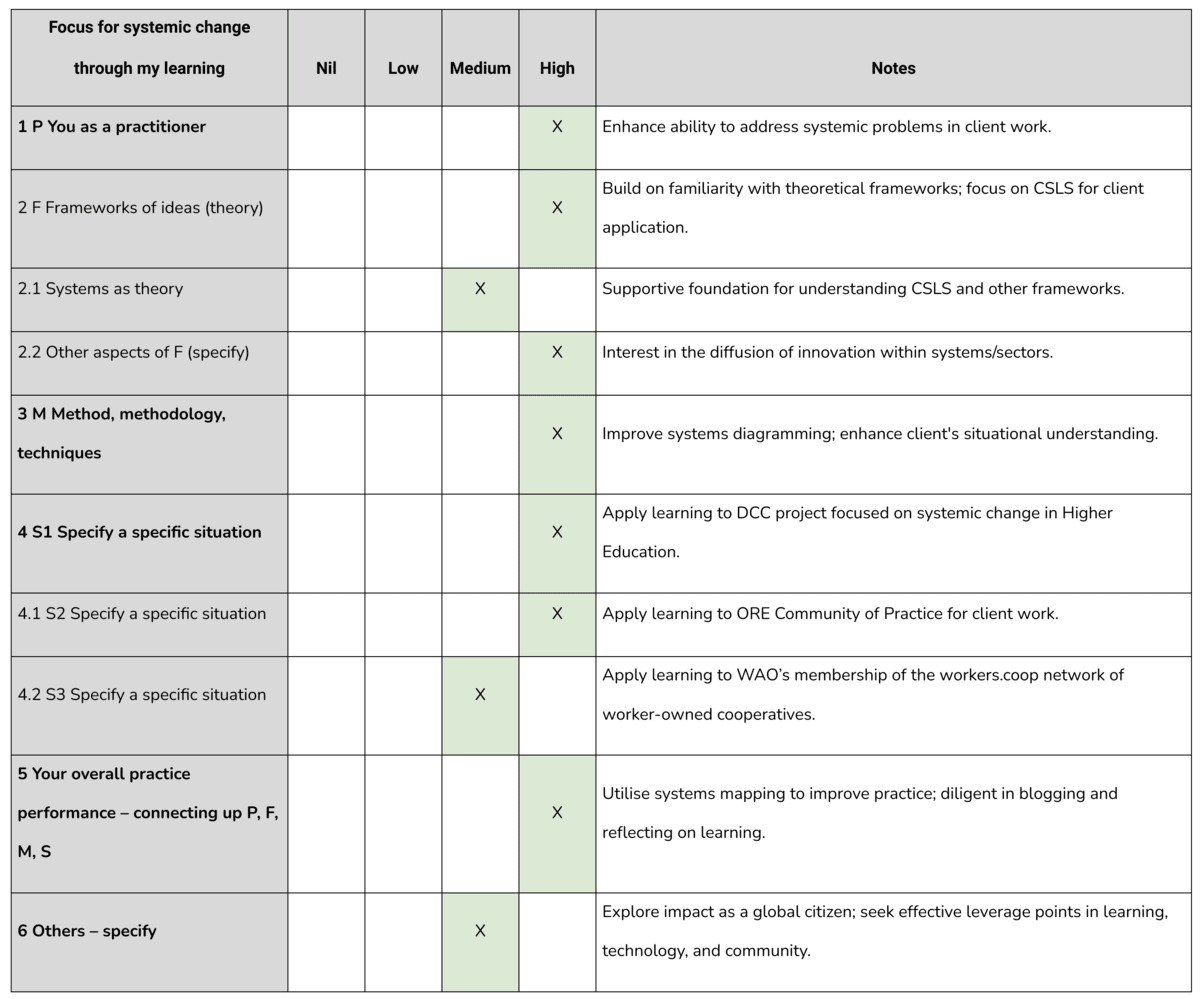TB872: Moving into Part 2 (a systemic inquiry into systems thinking in practice)
Note: this is a post reflecting on one of the modules of my MSc in Systems Thinking in Practice. You can see all of the related posts in this category.

There’s no rest for the wicked and, so after submitting my first tutor-marked assessment marking the end of Part 1 of this module, it’s time to get started with Part 2. I’m in Vienna at a conference next week, and then of course it’s Christmas, so I’d like to front-load as much of the work in this part as possible.
Part 2 is designed to enable you to become an effective Systems Thinking Practitioner and to use your STiP literacy and capabilities to undertake systemic inquiries which effect change that can make a difference.
In the course materials, Part 2 starts with some fantastic quotations, some of which I’d like to share here:
A caterpillar grows by getting longer and fatter, but this can only go on for a while before it reaches the limit…. It has to go through a transformation in how it is organised and how it relates to the world around it. The caterpillar changes the pattern of its life, abandoning the old and adopting the new. Similarly, we recognise the need for transformational change when we see that the way things are getting done now has limit; that we cannot get beyond these limits however much we try to improve the existing system, and that we must, as a result, create a new pattern of life for the future we want and need.
(Sharpe, 2020 p. 5; as quoted in Ofir, 2020)
This analogy captures a core principle of Systems Thinking in Practice (STiP) around the necessity for transformational change in systems. Like the caterpillar, systems have inherent limits to incremental growth and ‘efficiency improvements’. At some point, continuous small-scale enhancements are no longer sufficient, so a fundamental reorganisation/overhaul of the system is required.
The caterpillar’s metamorphosis into a butterfly is symbolic of the emergence of new patterns and behaviours in a system. The analogy is also instructive in terms of the need for the proactive creation of new systems aligned with desired future states. In other words, the caterpillar doesn’t become a butterfly by being more caterpillar.
When we must deal with problems, we instinctively refuse to try the way that leads through darkness and obscurity. We wish to hear only of unequivocal results, and completely forget that these results can only be brought about when we have ventured into and emerged again from the darkness.
(Jung, 1933, p. 111)
This quotation from Carl Jung emphasises the importance of embracing complexity and uncertainty in systemic problem-solving. With STiP, complex problems often have many interdependencies and hidden factors (“darkness and obscurity”) meaning that STiP practitioners need to be ready to engage with uncertain and ambiguous situations. Real-world problems rarely have obvious, clear-cut solutions, so journeying into the complexities to find a solution can involve courage to face the uncertain.
Of any stopping place in life, it is good to ask whether it will be a good place from which to go on as well as a good place to remain.
(Bateson, 2001 p. 14)
As I’m learning in the book Systems Thinkers there were quite a few prominent people relating to systems thinking with the surname Bateson. All were related. This quotation is from Mary Catherine Bateson, and emphasises how systems are dynamic. A ‘stopping place’ is therefore not just a static point but part of a larger, continuously evolving process. In others words, every state within a system is provisional and transitional.
This is similar to to something I often say in terms of “every technology is a bridging technology”. In other words, it’s the direction of travel that’s important when thinking about technologies, not whether this or that is the perfect technology for all time. Bateson’s reference to evaluating a place as both good to remain and to move on from resonates with me in terms of continual learning and adaptability.
With STiP, it’s important to keep reassessing situations, acknowledging that strategies and solutions effective in one context may need changing or adapting for future challenges. This mindset is forward-looking, and the value of any current state is assessed not only in terms of its immediate benefits, but but also by its capacity to enable and support future growth.
Image: DALL-E 3


